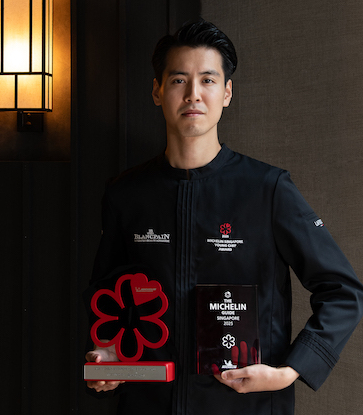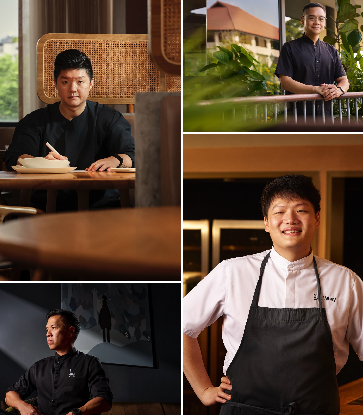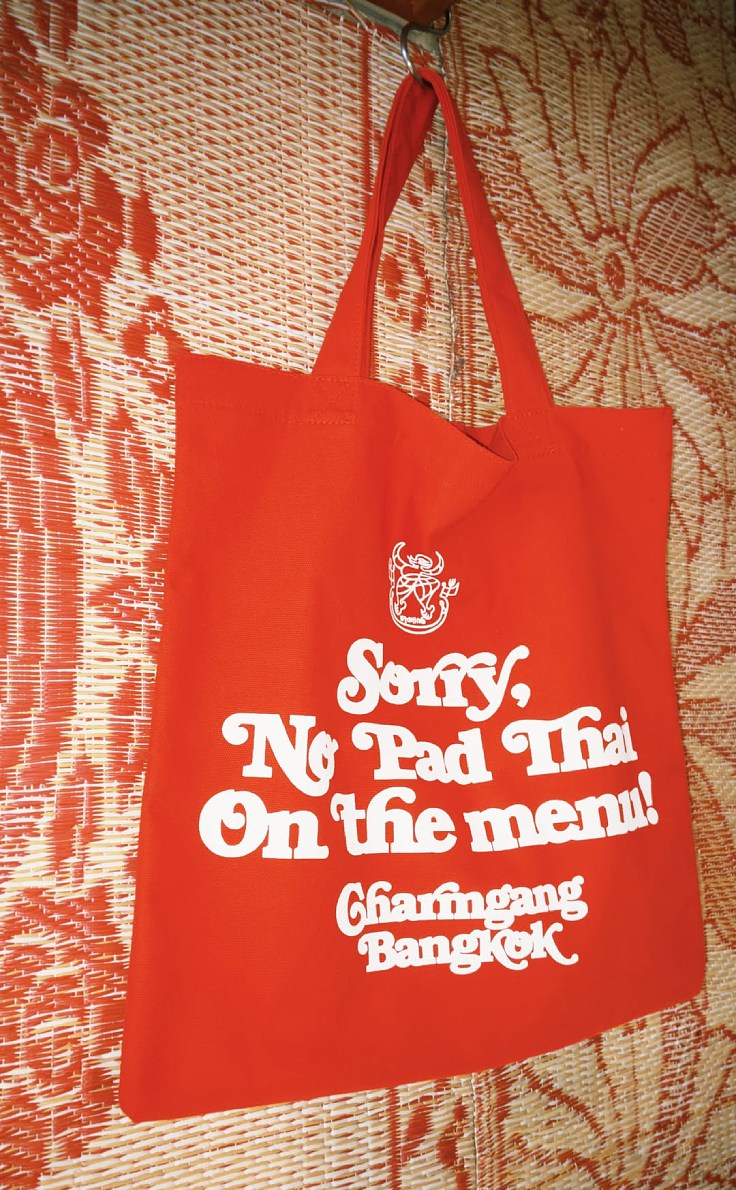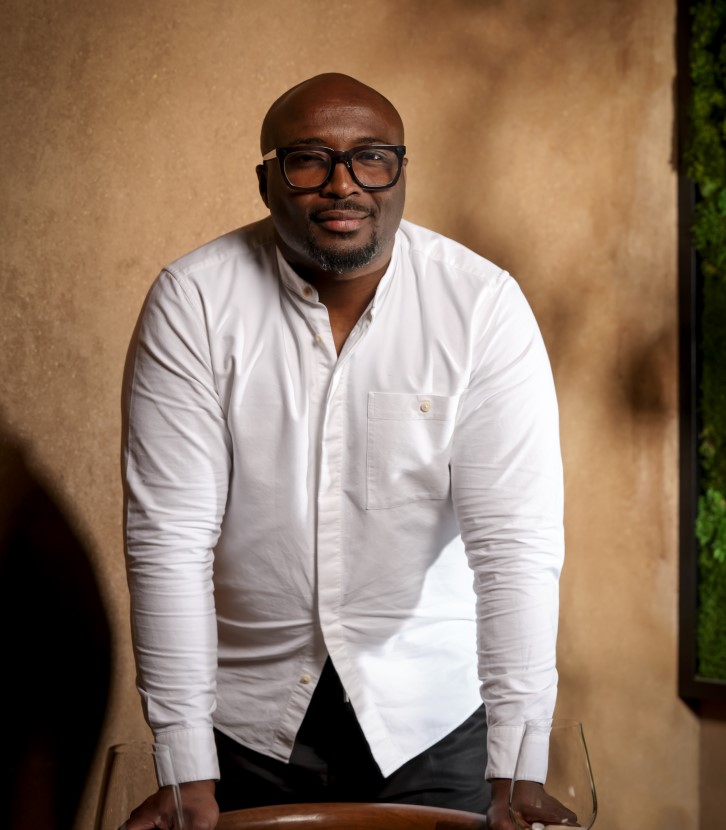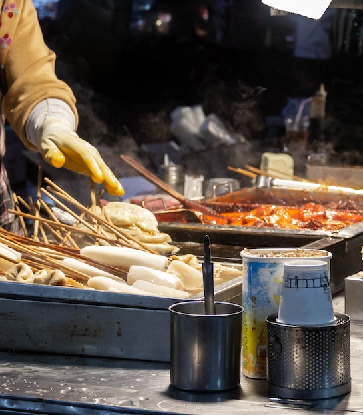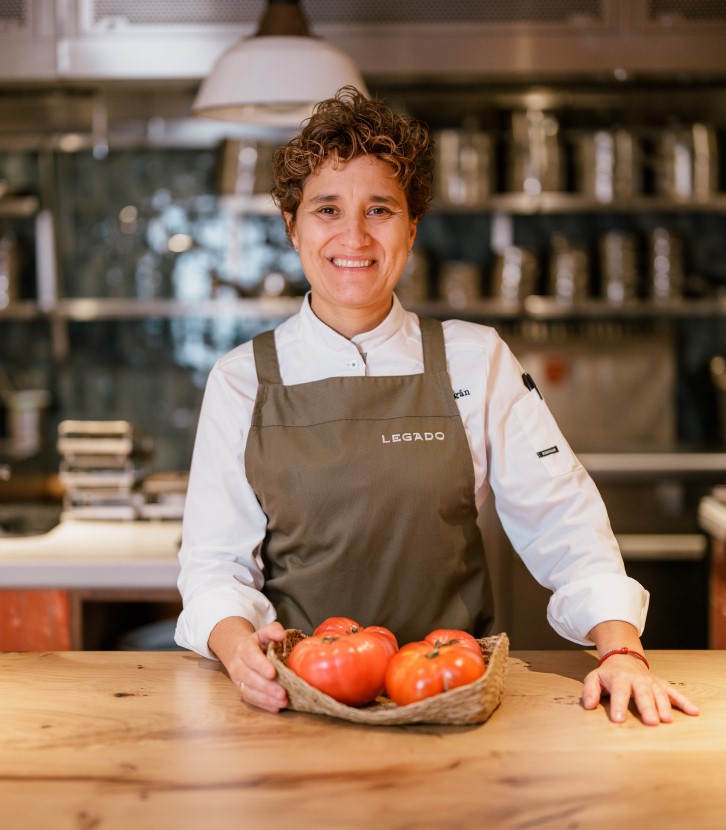When the last light in the restaurant dims and the kitchen doors close, some of the world’s most celebrated chefs step into unexpected worlds, revealing passions you’d never guess. From skateboarding through city streets and curating private art collections to spinning vinyl as a DJ or mastering the centuries-old art of Japanese Noh, these chefs show that creativity thrives far beyond the plate.
Though seemingly far removed from the stove and pass, these pursuits are more than hobbies — they fuel their imagination, recharge their energy and inspire the next gastronomic adventure.
Further Reading: From Stalls to Stars: Street Food’s Mark on Asia’s Cuisine
Adrian Chong Yen – the Muay Thai boxer
Sol Kitchen & Bar (District 1)
Bib Gourmand
MICHELIN Guide Hanoi, Ho Chi Minh City, Da Nang 2025
When he’s not hustling in the kitchen at Sol Kitchen & Bar in District 1, Ho Chi Minh City, the Malaysian chef behind its Latin American flavors releases his energy in a different arena — the boxing ring. Yen has been practicing Muay Thai for four years, ever since he found out he was going to have a daughter.
“My motivation was having to deal with her future boyfriends,” he jokes. “Boxing has been one of the best tools I’ve picked up. It’s definitely helped me stay healthy and stay focused on my goals. I think boxing is not only a great form of exercise but also a great skill set to have — it teaches discipline, focus and strategy, always thinking ahead.”
RELATED: Behind the Dish: The Delicious Mischief of Sol Kitchen & Bar’s Soft-Shell Crab Chicharron
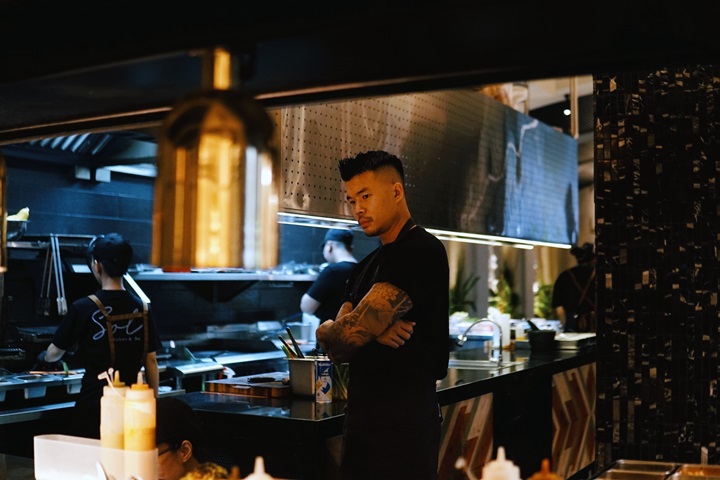
His proudest moment came when he gathered his culinary friends in Ho Chi Minh City for what he calls “the ultimate chef showdown” — prepping their dishes in the kitchen, stepping out to the ring to literally beat each other up, then jumping right back behind the stove to plate their food. They raised nearly $100,000 for charity that night in a friendly boxing match and feast that doubled as a fundraiser.
“Muay Thai boxing has definitely helped me tremendously in my career and health,” he says. “I’ve always turned to boxing as a form of therapy whenever I’m having a tough time. It also helps keep off all the weight we put on in this industry.”
Further Reading: Here's Why Asia is Becoming a Hotspot for Latin American Cuisine
Hero image: ©Adrian Chong Yen

David Lai – the ping pong philosopher
Neighborhood
One MICHELIN Star
MICHELIN Guide Hong Kong & Macau 2025
Some know David Lai for his mastery of seafood, some are drawn to his spontaneous approach to life and cuisine — blending inspirations from different culinary traditions to transform local seafood into extraordinary flavors, and some know him recently from his recent popular TV show. (Right image: ©Wu Jianping)
RELATED: Neighborhood Hong Kong: 5 Dishes Showcasing Local Seafood
Yet few are aware of another side of Lai: his devotion to ping pong. The hobby began four years ago during the pandemic, when tennis courts were closed due to social distancing. Today, three times a week, he heads to an hour-long practice session at a local court, followed by a visit to the nearby Causeway Bay fish market. There, he chats with familiar vendors and selects the freshest catch, finding inspiration for the day’s menu. "My ping pong sessions allow me to wake up mentally in order to focus on the rest of day’s tasks,” he shares.
RELATED: 2 Days in Central Hong Kong for Food and Art Lovers
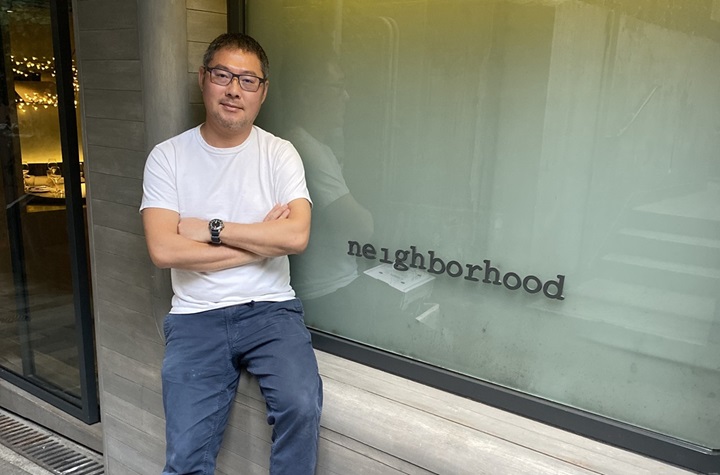
“I’m not a competitive person, so I enjoy friendly rallies rather than score-keeping games. It’s more enjoyable and less stressful,” he adds. “I enjoy ping pong because it gives me just enough exercise without overly demanding exertion. I can play rain or shine.”
Even in this relaxed pursuit, Lai’s approach is creative and purposeful. When transitioning from tennis to ping pong, he chose to play left-handed. "I was carrying too many habits from tennis — it was easier starting from scratch left-handed,” he shares.
Further Reading: Explore The Beauty Of Wet Markets From Three Hong Kong Chefs
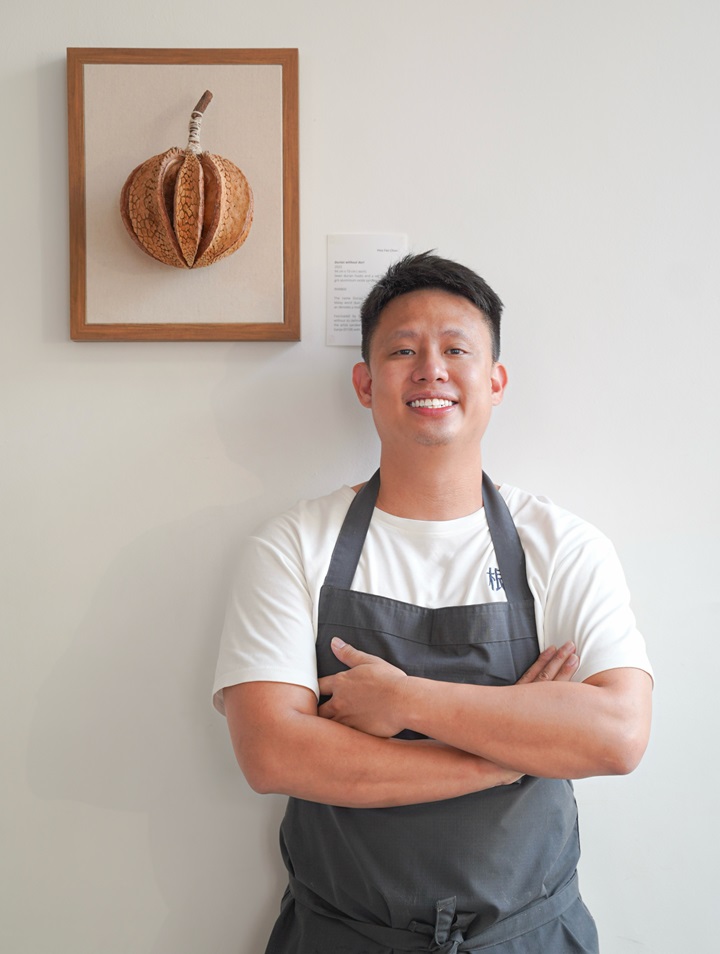
Johnson Wong – the art collector
Communal Table by Gēn
Bib Gourmand
MICHELIN Guide Kuala Lumpur and Penang 2025
Many restaurants line their walls with art. A rare few have a collection personally curated by the chef, such as Osteria Francescana, the Three-MICHELIN-Starred restaurant in Modena, which is home to works by Maurizio Cattelan, Damien Hirst, Ai Weiwei and Takashi Murakami — all part of an extensive selection curated by Massimo and Lara Bottura. (Left image: ©Johnson Wong)
Further Reading: Video: To Be Kids Again: Massimo Bottura on Tortellini and Cooking with Childlike Wonder
Chef Johnson Wong of Gēn, shares the same interest. The MICHELIN Guide Kuala Lumpur and Penang 2024 Young Chef Award winner began collecting art eight years ago, a year before Gēn opened in 2018, and he still considers it a personal passion project.
RELATED: Johnson Wong's Multi-faceted Penang is Alive with Street Food, Art, and Local Secrets
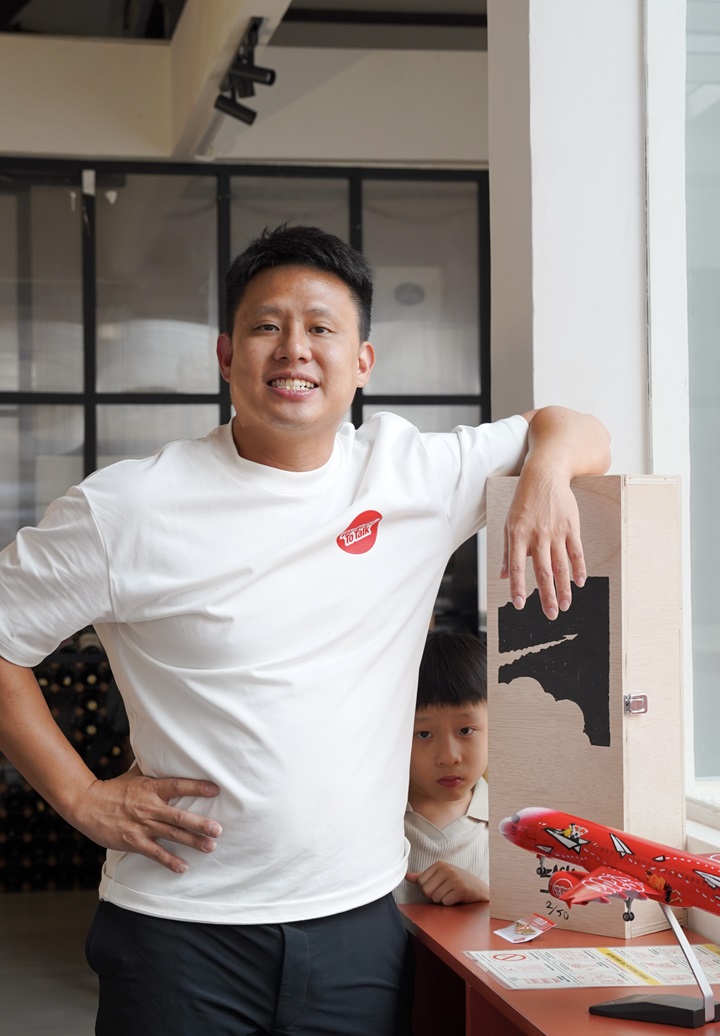
“I think more with my personal feelings and connection to the pieces, rather than how it looks in the restaurant,” he explains. “The idea and initiative behind the pieces are the most convincing parts for me.”
His collection of about 20 to 30 pieces comprises mostly local artists based in Penang, including Hoo Fan Chon, Joey Wong, Sumidik and Ernest Zacharevic, whose 2012 murals for the George Town Festival have become both tourist attractions and cultural landmarks on the island. “My favorite is Durian Without Duri by Hoo Fan Chon. He sanded down a durian until it was smooth and displayed the sanding belt next to it. I found it interesting because we all have an opinion on durian, but seeing it without the duri — the Malay word for thorn — is quite unusual.” (Right image: ©Johnson Wong)
For Wong, pieces that spark conversations about community and connection feel like a natural extension of the roots that inspired Gēn in the first place. “Our cooking prefers to be mostly inspired by the local community, on top of being produce-driven. A good piece of art can stir up people's emotions, and the same goes for a well-executed dish: like a masterpiece, it creates a multisensory experience that can evoke emotion and memory.”
Further Reading: MICHELIN Chefs in Malaysia Share Their Favourite Local Comfort Foods and Top Food Finds
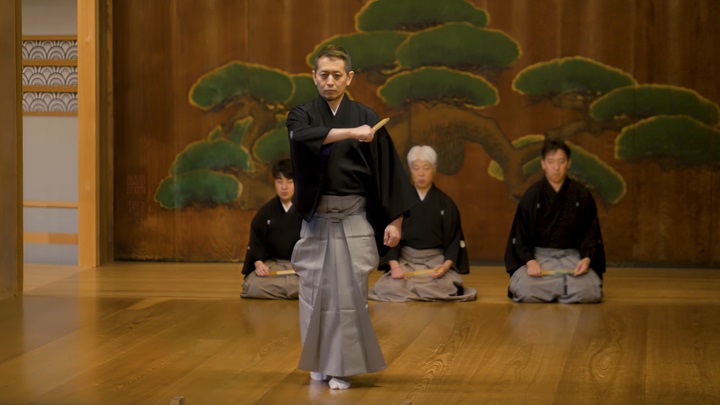
Takuji Takahashi – the Noh master
Kinobu
One MICHELIN Star
MICHELIN Guide Kyoto and Osaka 2025
In the quiet heart of Kyoto, where seasons are celebrated through flavor and form, Takuji Takahashi, third-generation owner of Kinobu, devotes his life to refining the art of Japanese cuisine. Yet beyond the kitchen, he has spent nearly three decades mastering another tradition of beauty and restraint — the classical performing art of Noh.
His path to the stage began during his early years at Tokyo Kitcho, under the tutelage of the legendary founder Teiichi Yuki. Accompanying his mentor to countless kabuki performances, Takahashi found himself drawn to the world of expression beyond words. When he returned to Kyoto, kabuki lessons were hard to find — so he turned instead to Noh, studying the Kongō school under a local master. What began as curiosity became a lifelong discipline; for nearly thirty years, he has practiced both chant and dance, performing in spring and autumn recitals, and recently receiving the shihan (master) certification.
RELATED: Kyoto by The MICHELIN Guide

Through Noh, Takahashi discovered a profound connection between stage and cuisine.
“Noh teaches the beauty of balance and the importance of seeing from above — what I call chūyō and fukan,” he says. “In each role, whether a god, monk or child, there is no hierarchy — only different forms of being. Food is the same: no ingredient is superior by nature; it’s up to us to reveal its essence.”
This sensibility now informs his cooking philosophy. Whether serving guests from Kyoto or abroad, he approaches every request — vegetarian, halal or personal — with the same openness and care. “I never say no,” he explains. For him, adaptation is not compromise but mastery: reimagining traditional dishes like gomadōfu (sesame tofu) with pumpkin or bell pepper in place of sea urchin, or crafting menus for temples and shrines that honor centuries-old customs while speaking to modern taste.
Further Reading: Kyoto’s Must-Try Dishes, According to Our MICHELIN Guide Inspectors
Each menu at Kinobu carries the memory of eras past — refined, seasonal and deeply personal. By blending artistic discipline with culinary creativity, Takahashi embodies a Japan that looks both backward and forward: serene, adaptive and endlessly curious.
RELATED: What Is a Ryotei? Discover Kyoto’s Best Traditional Restaurants
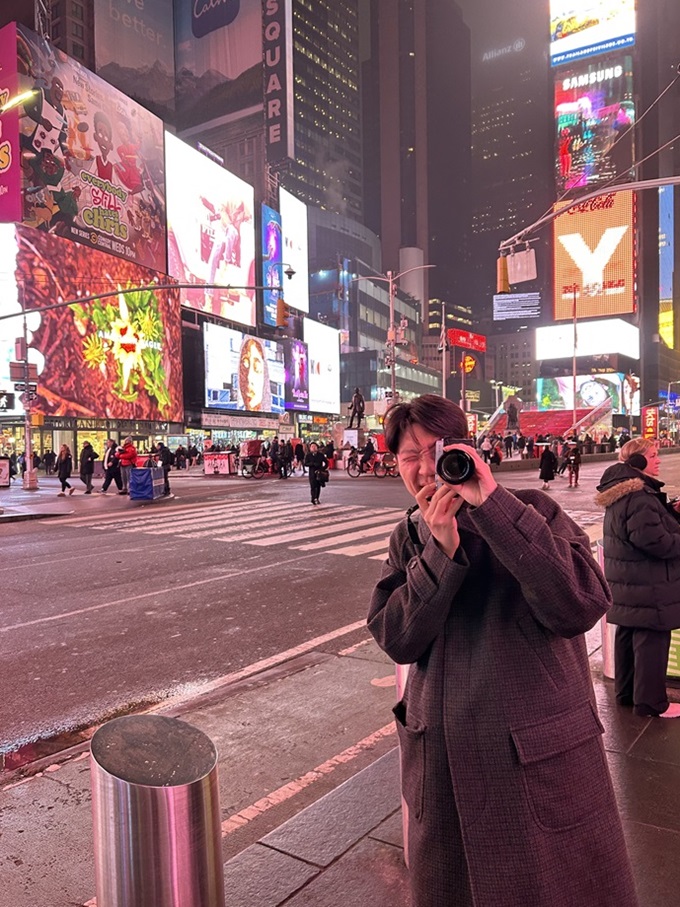
Sung Si-woo – the avid photographer
Légume
One MICHELIN Star
MICHELIN Guide Seoul & Busan 2025
When Sung Si-woo isn’t artfully crafting an oyster mushroom into a steak at Légume — Asia’s first MICHELIN-Starred vegan restaurant — the South Korean chef can often be found behind the camera. Since discovering an analog camera six years ago, the 35-year-old has become an avid photographer. “I’m always taking pictures whenever I can,” he says. (Left image: ©Sung Si-woo)
He keeps his hobby outside the kitchen — hence, no food photos. “They’re hard,” he admits with a laugh. Instead, he focuses on landscapes, family moments and snapshots from business trips with his team. To travel light, the chef favors compact, crop-sensor cameras that are easy to carry. His cameras of choice are a Fujifilm X-E4 for digital shots and a Rollei 35 for film.
Further Reading: 2 Days In Seoul
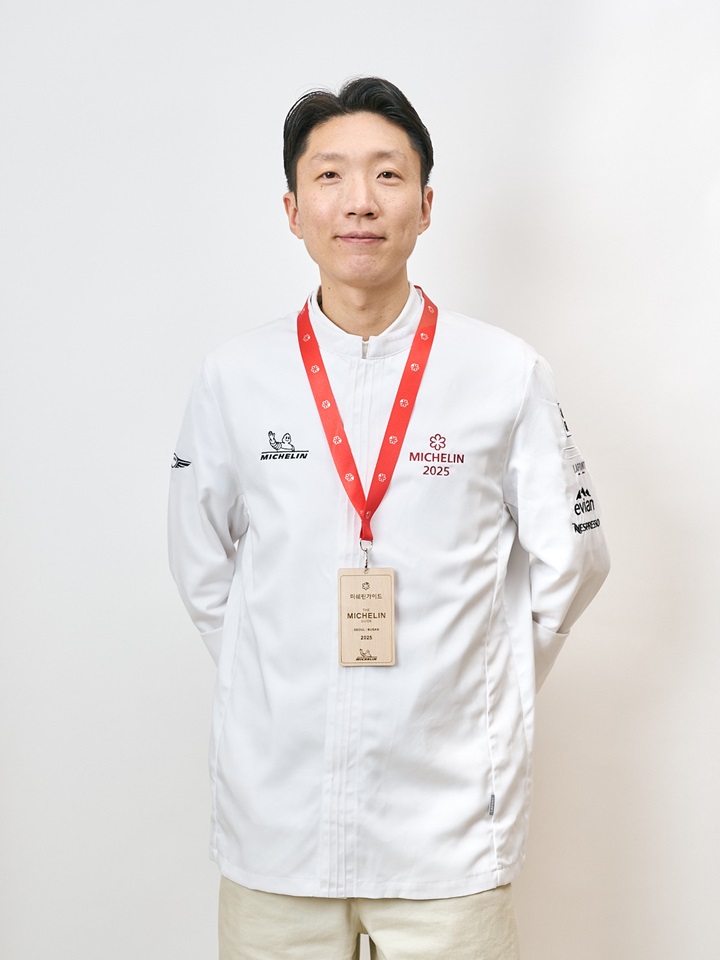
“What I enjoy about photography is the ability to be fully present in a single moment,” he says.
Still, his secret life as a photographer largely remains under wraps. Only close family, friends and employees see his event photos, while his personal landscapes stay quietly archived on Instagram for his viewing purposes only.
Yet the hobby often translates onto the plate. “Photography gives me inspiration for my cooking — through its colors, composition and framing. When I think of the frame as a plate, new ideas naturally come to mind.” (Right image: ©MICHELIN)
Further Reading: Three Local Dishes Unique to Seoul and Where to Find Them
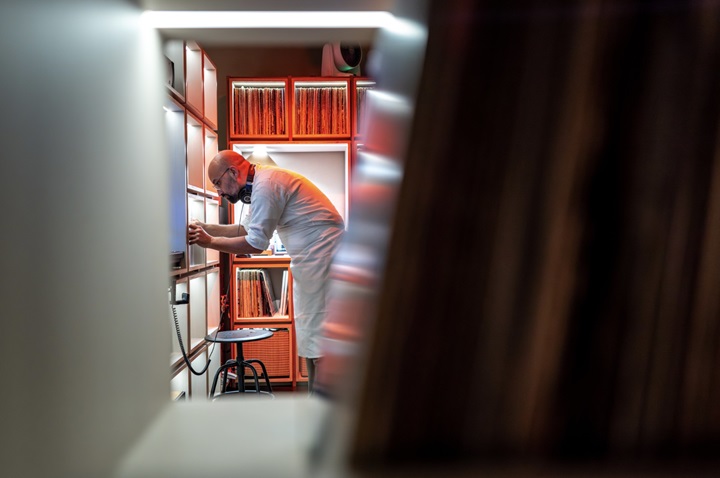
Ivan Brehm – the meditative DJ
Nouri
One MICHELIN Star
MICHELIN Guide Singapore 2025
In the quiet hours after service, once the last plate has been cleared and the clink of cutlery dissipates, Ivan Brehm steps behind another kind of counter. At Appetite, the experimental sibling space to his MICHELIN-Starred restaurant, Nouri, the chef swaps knives for vinyl, stirring moods instead of sauces. “I'm far from a master,” he admits. “I learned out of necessity. We were without a DJ at Appetite, and it runs a pretty special hi-fi setup that isn’t very DJ-friendly. You really can’t do much more than play with tempo and merge songs.” What started out as filling in for a missing DJ became a ritual of matching beats and feeling sound ripple through space like heat through a pot of broth.
“Music and food are, for me, the most evocative of all of the arts. Their appreciation isn’t filtered through thought; they hit parts of our memory and emotion that give purpose to our days. — Ivan Brehm”
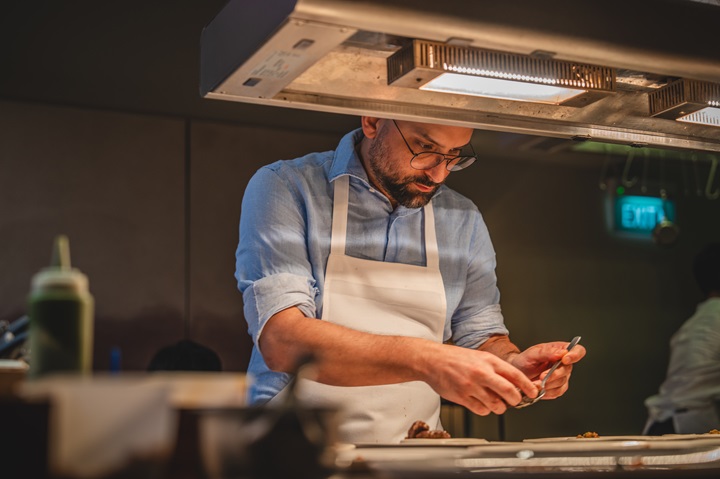
Ask him what Nouri would sound like if it had a sonic identity, and he doesn’t miss a beat. “It’s worldly, cultured and spans through a wide range of eras. We play everything from Baroque classical to Biggie [Smalls], Everything but the Girl, or Diabaté. It might sound chaotic, but much like the food, the songs are chosen for their patterns. And in the end, it all works.” For Brehm, music plays a role beyond just providing background noise; it’s essential to the experience. “Music and food are, for me, the most evocative of all of the arts,” he says. “Their appreciation isn’t filtered through thought; they hit parts of our memory and emotion that give purpose to our days. Because of that, they’re also a way to connect with the essential parts of who we are. Who hasn’t bobbed their head to a rhythm or been moved to tears by a melody? Those moments remind us of our shared humanity. They open the door to a world that feels more united, tolerant and a little more joyous.”
Further Reading: What Song Do You Cook To? MICHELIN Chefs Share the Beats They Groove to While in the Kitchen
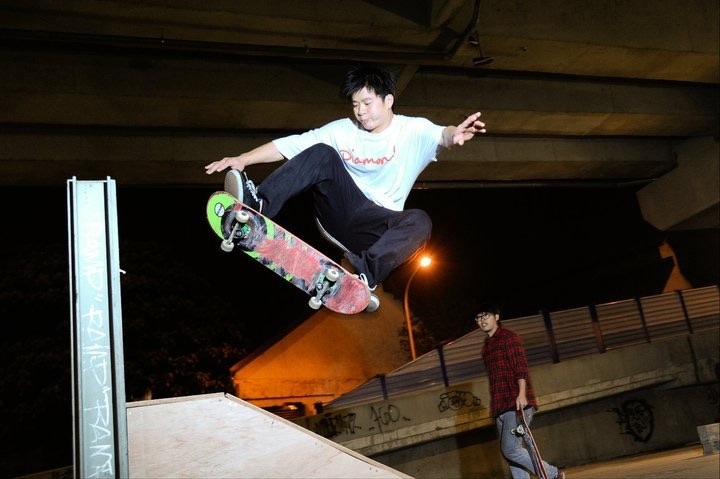
Chung Cheng-fang (Masa) – the self-taught skateboarder
Yu Kapo
Two MICHELIN Stars
MICHELIN Guide Taiwan 2025
At Two-MICHELIN-Starred restaurant Yu Kapo, Chung Cheng-fang (Masa) began his culinary journey straight out of junior high school. Around the same time, he discovered a very different passion — extreme skateboarding — a pursuit that has stayed with him for over 25 years.
“I remember seeing people skateboarding on the streets and thinking, ‘Wow, that looks so cool. I just have to try it,’" he recalls with a smile. During breaks at the restaurant, he would head to Taichung’s Zhiming Plaza (now CMP Eslite) to practice. Entirely self-taught, Chung devoted himself to skateboarding, practicing three or four days a week for two to three hours at a time. Even in the mornings with early shifts, he would wake up at 6 a.m. just to master a single move.
Further Reading: The Ultimate Guide to Xitun, Taichung: Where to Eat, Stay, and Shop

Skateboarding then became a life companion. It accompanied him on working holidays in Australia, helped him adapt to new cultures, and even followed him through his time at the former Two-MICHELIN-Starred Shoun Ryugin and his training in Tokyo. Today, despite an even busier schedule, Chung still finds time to skate at least once a week. There’s always a board at the restaurant, ready to roll — whether he’s heading home after work or running errands. His signature move? The "tre flip": launching onto the board, spinning it in every direction and landing perfectly to continue gliding. He has also competed in regional contests, once taking second place. (Left image: ©MICHELIN)
“What draws me to skateboarding is its freedom,” he explains. “There’s no rulebook. You can create your own style, link tricks into a sequence that’s uniquely yours, and share the joy with friends.” His adventurous spirit didn’t stop there — he later took up jet surfing and skiing, each a new way to explore and challenge himself.
Skateboarding has also shaped the way he approaches life and work. Constantly pushing himself to learn new moves has taught him patience, perseverance and the value of steady progress. “It reminds me that anything worthwhile takes time,” Chung says.
Further Reading: Video: 2 Days In: Taipei
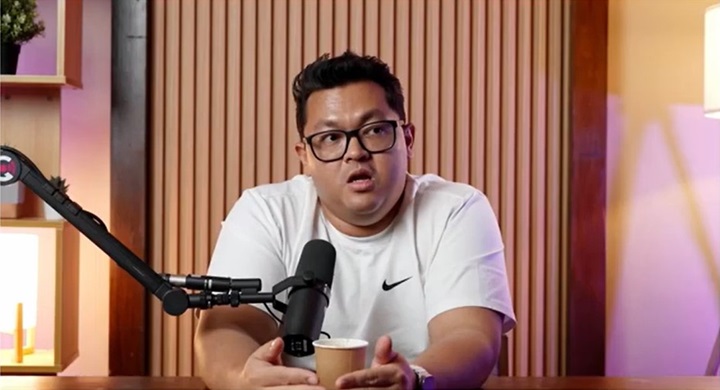
Pongcharn “Top” Russell – the content star
Mia
One MICHELIN Star
MICHELIN Guide Thailand 2025
As a master of juggling many roles between Mia and other projects across Thailand, the vivacious Pongcharn “Top” Russell of Mia still manages to find time to do what he does best — express. Inspired by his late friend Christopher Mennings, who encouraged him to open up about the lesser-seen side of the industry, the Ah Oui Chef Instagram, YouTube and podcast channels launched in 2024.
“I want Ah Oui Chef to be that space — where people can come in, answer questions and feel safe in a nonjudgmental environment,” he says. “For me, it’s become almost like therapy. Every guest ends up releasing something deeply personal. The dark side of this industry can be traumatic — especially for chefs and business owners. It’s emotionally taxing, and we carry that weight daily. I want to help lighten that load.”
Further Reading: Video: Why Life Is Worth Every Bite with MICHELIN Star Restaurant Chef Top Russell
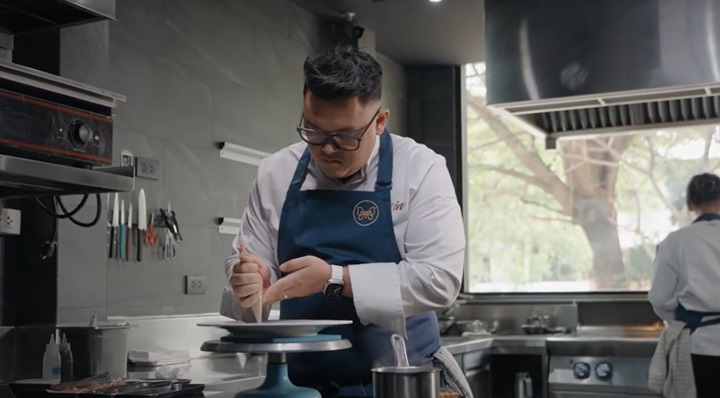
His proudest moments come when people open up. “Just saying it out in the open, being brave enough and trusting me enough with their story, which I take so seriously,” he says. Russell recalls one of the most heart-wrenching moments of his podcast: a chef he’d met only once messaged to say the show had been “a lighthouse for him during a very dark time” after his mentor’s suicide — a note that deeply moved him.
Through these conversations and stories, he hopes to plant the seeds of real change — including hiring and firing etiquette, which is something chefs rarely discuss. “I’ve had guests I completely disagreed with and we’ve both shared our perspectives. Showing that publicly is healthy. In F&B, there are so many sensitive topics people are afraid to discuss openly. Ah Oui Chef is my love letter to the industry — a space for honest, open dialogue that sparks even more dialogue.”
Further Reading: 2 Days in Bangkok for First-Time Visitors
Written by Pruepat “Maprang” Songtieng in Bangkok, Suma Wakui in Japan, Ethan Lau in Malaysia, Hyo-Won Lee in Seoul, Mikka Wee in Singapore and Hsieh Ming-Ling in Taiwan; introduction and edits by Hsieh Ming-Ling.
Further Reading: 5 Chefs With Surprising Past Careers





